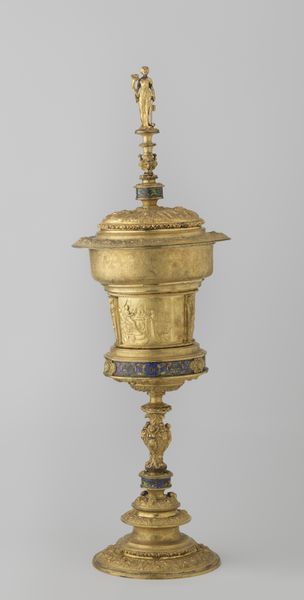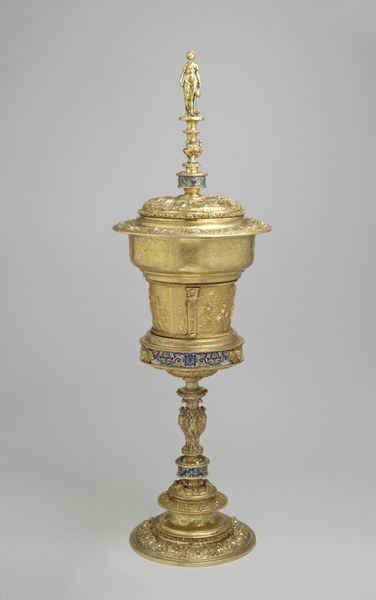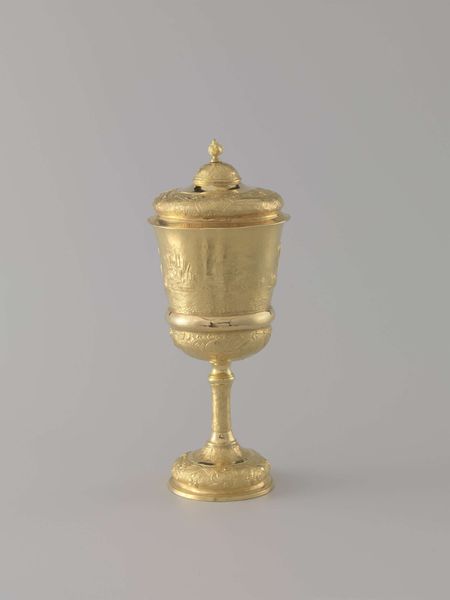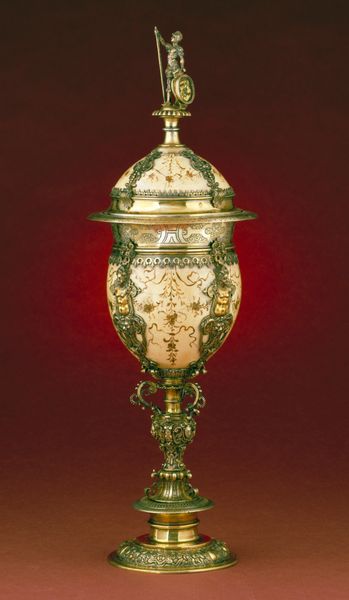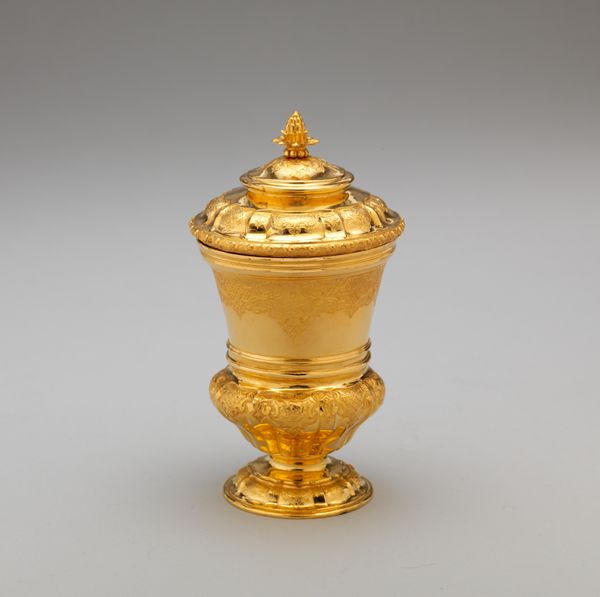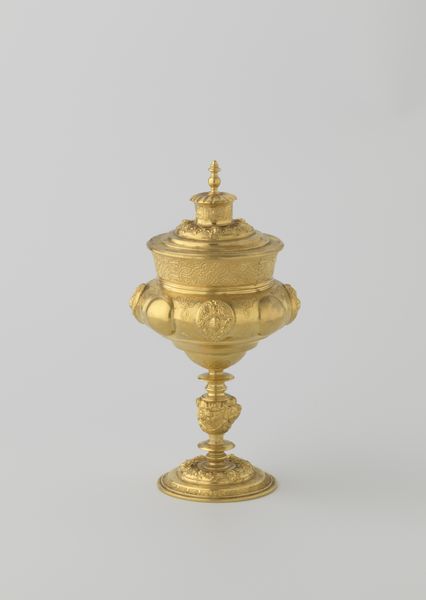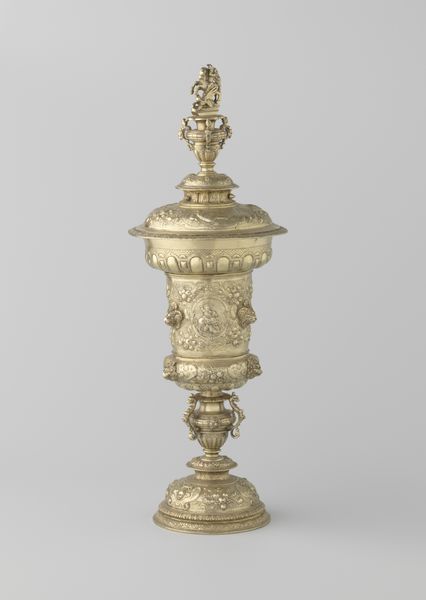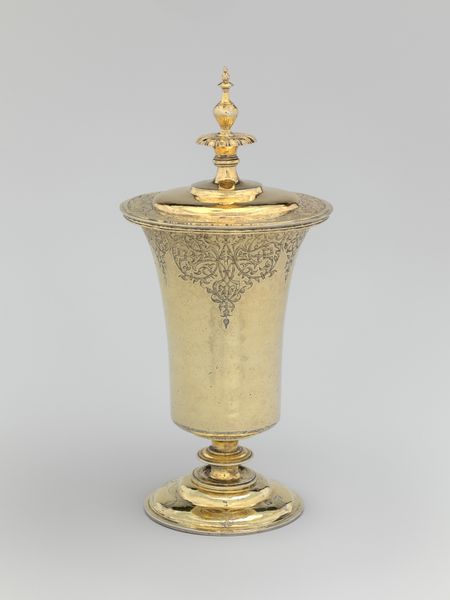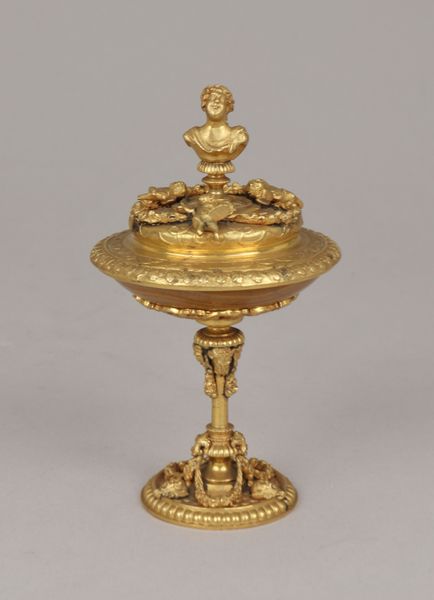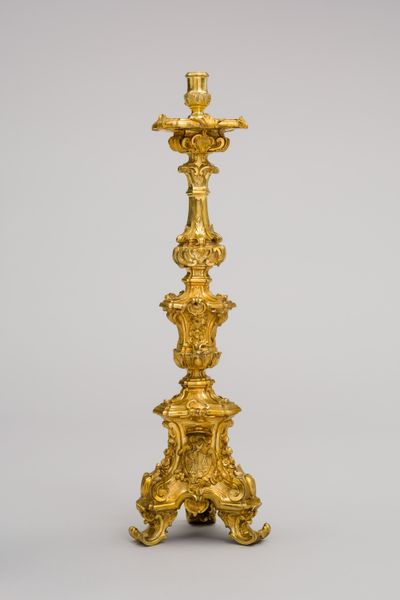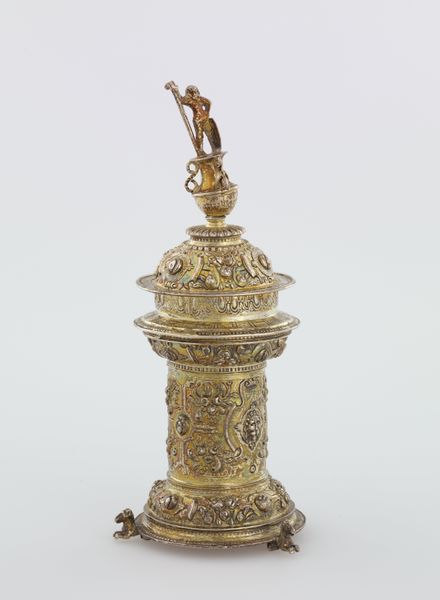
metal, bronze, sculpture
#
allegory
#
baroque
#
metal
#
bronze
#
figuration
#
sculpture
#
history-painting
#
nude
Dimensions: height 45.2 cm, diameter 13.9 cm, weight 2008 gr
Copyright: Rijks Museum: Open Domain
Editor: This extravagant "Goblet for Henricus Zwaardecroon," crafted in 1729, is made of bronze and other metals, a baroque sculpture fit for a giant! The figure of Atlas holding the world, the detailed relief work, and the gleaming material all seem to speak to the wealth and power of the person it was made for. What can you tell us about it? Curator: Well, seeing a piece like this, especially made for someone like Zwaardecroon, tells us a lot about the colonial power dynamics of the 18th century. Do you notice the imagery on the goblet itself? Editor: I see figures, seemingly from classical mythology, scenes that look triumphant. Is that significant? Curator: Absolutely. The choice of classical imagery was a common strategy. By associating themselves with the glory of ancient Greece and Rome, figures like Zwaardecroon sought to legitimize their authority and project an image of sophistication, masking, perhaps, more brutal realities of colonial rule. A goblet is a celebration, what is he celebrating? What part does he play? Editor: That’s quite a contrast. It makes me reconsider the opulence. The Atlas figure, bearing the weight...it could be seen as burdened. Curator: Precisely! Consider the role of art in creating public perception and shaping historical narratives. The commissioning of such an object serves not only as a personal status symbol but also as a deliberate act of self-fashioning within a specific political and social landscape. Who controlled the image, controlled the history. Editor: That makes you wonder, how much of what we see is genuine celebration, and how much is carefully crafted propaganda? Thanks for highlighting that social aspect and forcing me to reconsider this artwork from a critical perspective. Curator: It is essential that we continue questioning the narratives promoted by these grand displays. Analyzing visual cues is one important part of historical investigation.
Comments
rijksmuseum about 2 years ago
⋮
This cup was intended as a gift from the VOC (Dutch East India Company) to former Governor-General Henricus Zwaardecroon (1667-1728), but because he died before the showpiece could be delivered, it remained in the donor’s possession. Gods and goddesses of the sea reference the overseas territories in Asia, the chief products from which are depicted on the lid. Zwaardecroon introduced the coffee plant from South America and the silk caterpillar from China in Java.
Join the conversation
Join millions of artists and users on Artera today and experience the ultimate creative platform.
